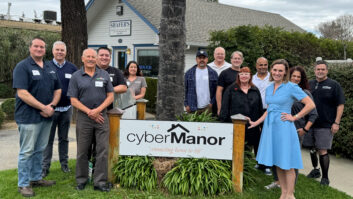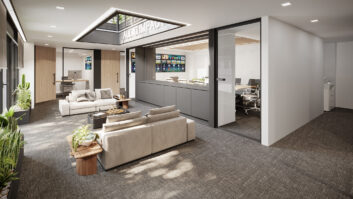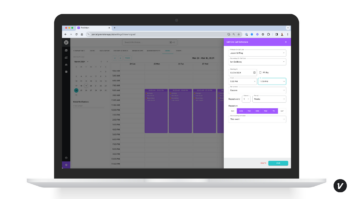No, the title of this month’s article doesn’t mean that this is a review of a newly remastered, HD resolution version of a 1950s black & white sci-fi film.
Rather, the description refers to a term from the computer world that could be easily adapted to describe a new category of audio/video “connectivity” products that, while not entirely new, cropped up everywhere at January’s Consumer Electronics Show.
As you may know, in the computer world, a “thin client” device describes a product that is connected to a network that has little computing power on its own, but rather depends on a less powerful or specialty processor to do specific tasks related to querying a main server for data or files and displaying them locally. Thin client products provide a window into the power and capacity of the host processor. Indeed, another model, this has been referred to as the “Client/Server” model.
Going back a few years, this type of device was promoted for use in the home for applications that allowed you to work from a relatively “dumb” terminal in a kitchen or other area where more processor-intensive word processing or spreadsheet applications weren’t required. It seemed like a good idea at the time, but none of the products really made it, and the category went away for a while. The rapid drop in pricing for “full” computers, along with other factors led to the demise of that kind of device. However, these days it is having a bit of a comeback through ideas such as refrigerators with Internet browsing and other computing accessed through an LCD screen mounted on the freezer door.
Anyone walking around the CES saw that thin clients are back, though in different forms, with different connectivity options and for different purposes. The combination of inexpensive hard drives for use in the server, the explosive growth of wireless home networking and the ubiquitous nature of music, still image and video files downloaded, stored and shared on home PCs or distributed from legitimate (and, regrettably, illegitimate) online sources has given rise to a new world of thin client products.
As with most things at the nexus of the computer and consumer electronics markets, these products present both a challenge to the business of the custom installer as well as opportunities for new business. How this rebirth of thin clients affects you will be, in large part, determined by how well you understand what they can, and cannot do.
Regardless of brand name or product specifics, the root task is to be able to access the media-related files stored on a computer (or dedicated consumer electronics product) in another room of the house, reading any metadata that accompanies them to identify the title/artist/time. In more sophisticated products the ability to directly access Internet Radio or other Internet streaming services is added. The files are selected using a conventional remote control and either a front-panel display on the thin client device or through on-screen displays on a video monitor connected to the client box. Again, depending on the amount of power available in the device itself, or in the host computer, play lists may be created.
Once the files are selected and streamed down to the client from the in-home host computer or the Internet-at-large, the thin client device processes or decodes the files and outputs them to a receiver, amplifier or audio/video display via either analog left/right audio or PCM digital through a coax or optical connection. Then, finally they are further processed, amplified and output to speakers.
Additional options or capabilities vary from brand to brand and model to model. Some products extend the concept further by including a built-in DVD player, while others add either internal amplification or mate up to matching powered speakers. Because connectivity via a network link is the key concept here, on-board connectivity also varies. Some products are 802.11b wireless, some up the ante through the use of 802.11g/b connectivity that takes advantage of faster data rates, while standard wired Ethernet connectivity is almost always present at a standard RJ-45 jack to allow the use of wired networks or to attach a bridge to other topologies such as HomePlug or HomePNA when wireless is not available or practical.
Digging deeper, you may use some of the products with both PC and Macintosh computers, while some are compatible with only one type of computer or operating system. The ability to stream still- and motion-video images ranges from simple JPEG files to the full range of still formats (JPEG, GIF, TIF, PNG and BMP) and MPEG-2, MPEG-4 and even DivX formatted video. Digital music formats almost always include MP3, but some products add WMA.
Viewed in the context of a simple way to access music and video in a remote room with “only” a relatively inexpensive thin client box, a few interconnects and a means to use wired, wireless or “no-new wires” technology to connect to an existing home network. Given the wide range of product options, and the ability to select from high-profile brands such as Linksys, Netgear, D-Link, Turtle Beach, Gateway, HP, Dell, Alienware and Samsung and others what could be wrong?
On the surface, not much. However, viewed from the perspective of the consumer, particularly one who reads about things such as Microsoft’s Media Center XP Extender products, this seemingly benign category could be seen as a means to create a do-it-yourself whole house distributed audio/video system that is easy to install thanks to wireless technology. You don’t need to read much further to see this as a way for someone who might otherwise be one of your customers to say, “What do I need that install company for?”
I think that they, to some degree, might be correct. After all, can the products that you install stream Internet Radio services throughout the house for someone who, for example, wants to wake up to the BBC World Service in the bedroom or listen to an Internet-delivered broadcast of the client’s favorite out-of-state sports team? Perhaps, perhaps not, but the real key is to step back and analyze the costs and benefits of this product category and then be able to intelligently compare and contrast them to the type of system that you might install.
First, and most compelling for the installation traditionalist, you need to keep in mind that these products are all stand-alone devices, and most require connection to an external amplifier or processor before that final link to the speakers. Thus, any prospect looking for the convenience of a fully integrated, in-wall system with on-wall keypad controllers will not be happy with thin client products. No matter how elegant or stealthy their design may be, they won’t be able to compete with the seamless appearance of custom devices and there will be wires required for connection to speakers. This is easy argument Number One for you to win.
Next, by their nature, these devices are based on access to files stored on a computer, which makes it difficult to playback directly from a CD. Yes, of course, the contents of a CD may be “ripped” into the hard drive where the files are stored. For some consumers this doesn’t pose a problem, particularly when there is a teenager or two in the house. But for many traditional distributed audio clients, this is simply too much work. They want their music from a CD or the AM, FM or satellite tuner and they simply can’t be bothered with anything else. This is discussion point Number Two with the client.
To the core of the matter, the successful installation company will long ago have abandoned the moniker of “home theater installer” and expanded to the broader business of total custom installation and systems integration. Yes, these products do slave to computers, and yes, with the right peripherals and programming, those same computers can be taught to perform home automation tasks, security monitoring and all the “neat stuff” you can do. However, you should be able to tell all the tales of horror to relate the fact that such programming and integration is not a task for the amateur.
If you outline the task of installing the server/control/asset management program required by most of these products on a main computer, installing and configuring the wireless system with the proper level of security, it becomes apparent that although self-installation is clearly possible, it won’t be easy. If someone has already come to you for a bid on a system and then brought this up as an alternative, the likelihood is that they are probably not really looking to “do it themselves.” Close them on the sale by explaining that your systems can not only deliver music, but control the HVAC, monitor the baby’s room, control the sprinklers, provide an image of who is at the front gate or door and then open it remotely and much more. That is the true measure of a system that moves beyond entertainment into a totally integrated home environment. This is client eye-opener Number Three.
Moving in for the final close, come back around to a remnant of the first point. Remind your sales prospect that as nice as these thin client devices are, virtually all of them require local amplification, speakers and a variety of connections and systems that need to be integrated. Do they want a hodge-podge of mismatched components or a system hooked up to the leftovers from their last home theater upgrade that might otherwise be consigned to the garage sale? Or, are they interested in a totally matched system optimized for ease of use, complete input source flexibility and true sonic performance? They’ve already passed the three strikes, this is Number Four, and the thin client is outta here! Well, in reality, perhaps not.
Having successfully made the argument in favor of a custom integrated system, it may well be time to bring up the use of a thin client product for applications where they make sense. Easy examples are the previously mentioned appeal of being able to listen to out-of-area and international news or sports broadcasts, or to access image files edited on a home computer that look great when streamed to the theater for viewing on the big screen. Emphasize how the multi-channel processing options you are adept at installing with a full complement of main, surround and LFE speakers makes the sound from MP3 or other streamed files and programs sound unlike anything they have ever heard when using “computer speakers” or the files as played in their native two-channel state.
In their proper place, any of the thin client products may be a logical addition to a multi-room system when integrated either as a local source input in the remote room, or when controlled back from that room via IR feedback to a thin client in your equipment rack that, in turn, is streaming off a computer located elsewhere in the house. The mention of networking, of course, gives you another option to sell profitable installation and on-going update/maintenance services to clients when they might not otherwise see the value you bring to the party.
At first glance, the attack of the thin clients seems as though it might be a battle you need to fight strongly enough to vanquish the intruder, lest it capture your market share for products sales and installation services. At the end of the day, the real key is to view the intruder as a future ally. Take advantage of the exposure the introduction of these products brings the concept of remote zone entertainment, convert it to a sale for things you can do, and then amaze the prospect-now hopefully a client-by suggesting that while these units may not be the basis for a total system, when properly integrated they provide yet another set of unique benefits you can bring to a project.
Michael Heiss ([email protected]) is a technology and marketing consultant based in Los Angeles, California.






